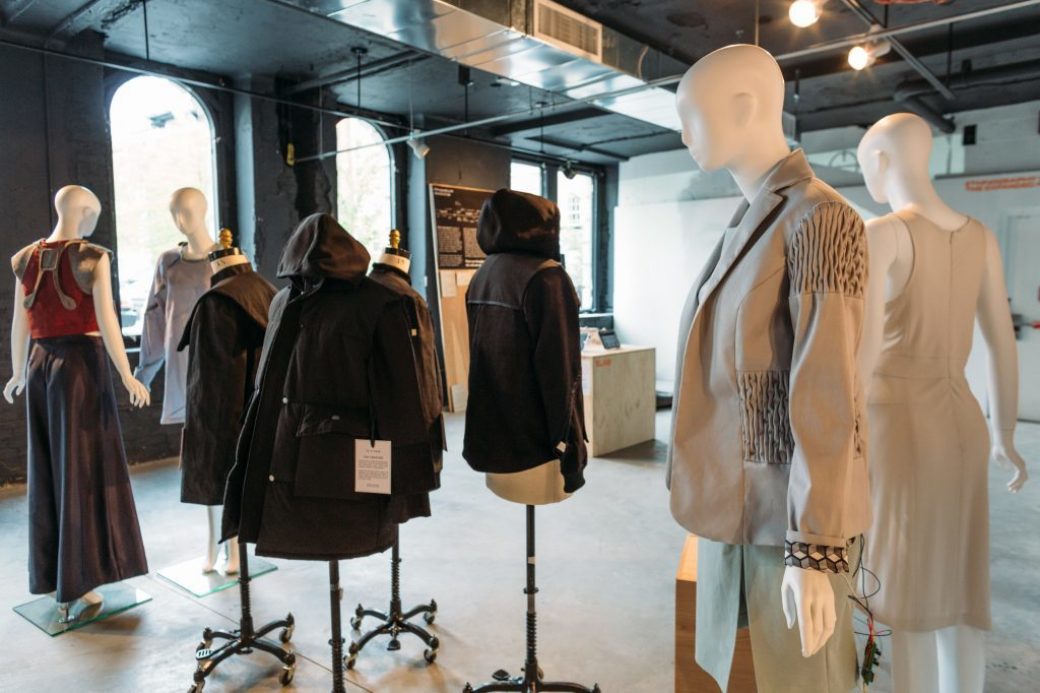
Wearable Technology

-
PARTNER: Intel
GOAL: Explore ways technology can provide new functionality to clothing and be integrated into the wearer's daily life
APPROACH: Students designed garments in which Intel’s inch-long wearable module, Curie, was used to change the form of clothing or provide a new functionality.
OUTCOME: Inspired by the sensing and computational capacity of Intel's Curie module, student teams from Parsons' industrial design, data visualization, and design and technology programs worked to create devices and garments that users could integrate into their daily lives. By combining this cutting-edge technology with strategic designs in Intel’s sponsored course, students discovered revolutionary ways people could interact with their clothing. They sought to demonstrate how wearable technology can improve well-being and social connectedness and how the ability to adapt the style and silhouette of a single garment for changing situations boosts convenience and economy.
Students explored ways in which the Curie module could be embedded into pieces of clothing practically, durably, and sustainably, blurring the line between form and function. One group integrated a garment with sensors that could "learn" and adapt to the wearer’s emotions and behavioral patterns, releasing soothing vibrations at key pressure points when stress was detected. Another team, inspired by cuttlefish, created clothing that could change shape depending on the time of day, making it possible to go from day to night without switching outfits. A third group embedded bomber-style jackets with small square data screens, programmed to display custom data based on a personality test taken by the wearer.
The collaboration was an ambitious exploration of the opportunities and challenges presented by potential markets for wearable technology and reflected the school’s commitment to free and diverse thinking from the industry’s future changemakers.